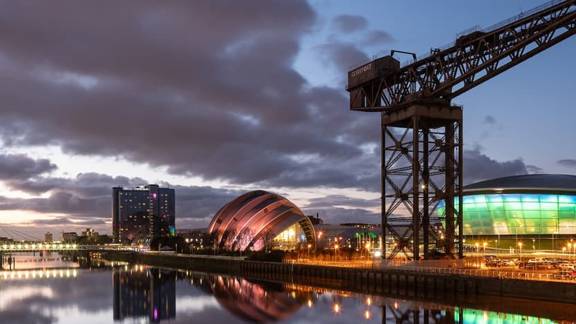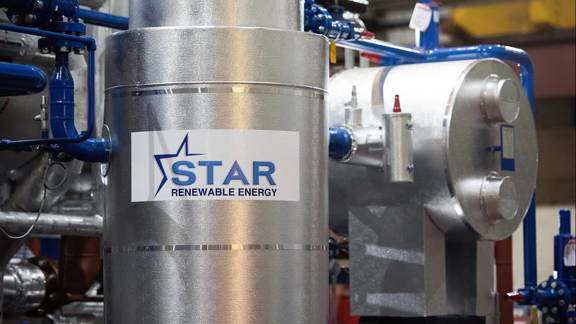The energy efficiency and low carbon heat revolution
23 Aug 2021 • 7 minute read
Doreen Reid, our Low Carbon Energy Transition Specialist outlines Scotland’s approach to decarbonising heat.


Transformational change in the heating sector
There is growing public awareness of the urgency to decarbonise our daily lives. And while everyone can and must make an individual difference, transformational change will be driven by governments, industry, academia and private investment.
In 2019, the Scottish Government declared a global climate emergency and announced that Scotland must reach net zero emissions by 2045, underpinned by statutory legislation to reduce emissions by 75% by 2030.
Heat is the single largest source of emissions in Scotland, therefore it is the biggest barrier to achieving these targets. More than one million Scottish homes will need to have switched to efficient heat technology by 2030.
To reach net zero targets, by 2045 nearly all UK homes, businesses, commercial and public sector buildings must be using a zero-emissions heating system. Make no mistake about it, this is the biggest transformation the UK has seen since the introduction of central heating, when between 1960 and 1965, 1.5 million whole house heating systems were installed.
Scotland is developing a robust regulatory framework to drive this transformation, such as the recent introduction of a Heat Network bill to accelerate expansion of heat networks.
The Scottish Government is consulting on a plan to introduce regulation to ensure all new homes use renewable or low carbon heating from 2024. And every Scottish local authority must have a local heat and energy efficiency plan in place. These are just a few of the developing measures.
But what does this really mean in terms of installations?
How many installations of new heat solutions are required?
By 2030, Scotland’s interim targets for installations are:
- 170,000 off-gas grid homes
- At least 1 million on-gas grid homes
- At least 50,000 non-domestic properties being switched to zero emissions alternatives
- A growing UK market for heat pumps
A growing UK market for heat pumps
The UK currently imports 70% of its heat pumps. The UK government has estimated that 600,000 heat pumps will need to be installed annually by 2028. That’s a massive 20-fold scale up from the current annual installations of circa 30,000 in 2019 across the UK.
This will also demand the biggest transformation to the UK grid infrastructure for decades as well as a re-invigorated focus and support around increasing energy efficiency.
How does this compare with other country markets in Europe? A recent report by the European Heat Pump Association (EHPA) shows a total of 14.84 million heat pump units were installed in 21 countries in 2020. This is an increase of 6% or 1.6 million units over 2019.
The top three markets were France (394,000), Italy (233,000) and Germany (140,000). These three markets combined account for 48% of all sales. The top 10, including Spain, Sweden, Finland, Norway, Denmark, Poland, and the Netherlands are responsible for 87% of annual sales.
Utilities such as SSE have announced a commitment to invest £7.5 billion in decarbonisation by 2025 which includes, among other things, investment in grid infrastructure.
Better heat networks and district heating is the way forward
The use of heat networks or district heating actually dates back to the 1880s and the first housing estate in Europe to incorporate a district heating system was actually in Dundee, Scotland. However, as you’d expect, they have undergone various evolutions.
The most significant change happening now is the switch to renewable energy generation and integration of both storage technologies and digital technologies. Plus, how heat networks will be integrated across electricity, heat, buildings and mobility presents exciting opportunities to develop new value chains.
The use of heat networks across the UK will be expanded – growing from supplying 2% of UK heat demand currently to 17% of heat demand, with investment of £17.5 billion by 2030. In Scotland that means 650,000 homes connected to a heat network by 2030.
The challenge of achieving low carbon heat reductions
These are big numbers offering a massive market opportunity, but is it achievable?
There is government recognition and commitment that, to achieve these numbers, a significant and laser-like focus is required to increase:
- Public awareness
- Supply chain capacity
- Skills development
- Innovation and pilot projects
- Support and incentives
- Infrastructure
- Private investment
In Scotland, an estimated £33 billion expenditure will be required on energy efficiency and low carbon heating to meet the 2045 net zero targets.
In terms of the UK Government, more discussion is required about the need to spread the levy costs, with heavier costs landing on fossil fuels to ensure that low carbon heat can compete. This is not a devolved matter, but the UK government is aware of this important issue.
Innovative solutions for the low carbon heat revolution
Many Scottish companies have been expecting and preparing for this low carbon heat revolution for some time. So, they have been developing innovative products for both a UK and a global market.
Indeed, Scotland has over 300 companies in the low carbon heat supply chain with companies such as Mitsubishi Electric Air Conditioning Systems Europe – a leading Japanese global manufacturer of air-source heat pumps.
Its manufacturing site and the European headquarters of its research and development (R&D) centre are co-located in Livingston. This means R&D, design and manufacturing teams are co-located on the same site, making it a significant location for the company’s global operations.
Around 70% of Mitsubishi Electric products are currently sold to non-UK markets, with 30% sold within the UK. But there’s a significant opportunity for Mitsubishi and its suppliers to capture additional market share.
Heat pump heroes
Glasgow-based manufacturer, Star Renewable Energy is best known for providing refrigeration systems to some of the UK’s biggest retailers, including Tesco and ASDA. But then it introduced its 'Neatpump' water-sourced heat pump, which can harness heat from rivers and waste heat from industrial processes.
Back in 2011, it beat much more established heat pump companies to deliver a successful heat project to 60,000 citizens in Drammen, Norway. The company hasn’t looked back since, with projects in Scotland and opportunities across Europe.

Sunampopens in a new window achieved a breakthrough in stabilising phase change materials to develop a new way of storing heat energy safely and efficiently, ready to meet domestic hot water needs in an instant.
The company is the only thermal storage manufacturer in the world to be awarded A Grade RAL Certification, the independent quality mark and the only global standard for Phase Change Material (PCM) and PCM products, confirming reliability and long life of Sunamp thermal batteries.
Sunamp has projects in Scotland, but also further afield in China. It has partnered with the University of Glasgow, Beijing University of Technology and China Investment Yixing Red Sun Solar Energy Technology to deliver an Organic Ranking Cycle (ORC) renewable energy power plant in China.
The plant integrates with thermal energy storage, using renewable heat sources for distributed heating and power.
In terms of recent inward investments, Japanese firm Mayekawaopens in a new window recently set up R&D in Scotland to develop new ground-breaking and more sustainable refrigeration products. These products will be vital to the continued and sustainable growth of heat pump related sales.
The scale of the emerging UK low carbon heat market means there's plenty of scope for further growth and diversification of Scottish company expertise, as well as opportunities for international collaboration, innovation and inward investment.
Similar drivers for the rest of the world to decarbonise their heating and cooling requirements means additional significant markets of opportunity.
The Intergovernmental Panel on Climate Change (IPCC) recent report makes it clear that the climate crisis is unequivocally caused by human activities and is now a code red for humanity. By decarbonising heat, we can take affirmative climate action which also offers hope for a huge economic green recovery.
You might also be interested in
-
Energy investment and supply chain
Looking for the right location to set up and grow a sustainable business? Need suppliers or partners for your energy transition project? We can help.
-
Low carbon heat opportunities
Take a closer look at some of the low carbon heat projects underway in Scotland and explore the benefits of setting up your low carbon business here.
-
Hydrogen energy future
Could hydrogen be key to Scotland achieving net zero? Scotland's hydrogen, energy and low carbon specialists Dave Holman and Meinolf Otto share their thoughts.
Sign up to our newsletter
Get the latest updates from Scotland’s renewables and energy industries.
Got a question?
Want to develop a more sustainable business? Let’s work together. Talk with our experts to get started.
